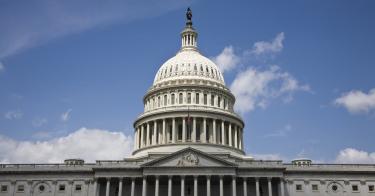Responding to a request from the top Democrats on the House and Senate Armed Services Committees, the Congressional Budget Office (CBO) last week reported the cost of a New Strategic Arms Reduction Treaty (New START) withdrawal could be anywhere from zero to half a trillion dollars. Sen. Bob Menendez, D-N.J., and Rep. Adam Smith, D-Wash., are now using the CBO’s worst-case estimate to argue that New START withdrawal will cost the U.S. hundreds of billions of dollars.
Even if that half-trillion-dollar price tag were accurate (and, remember, $0 is just as likely), the notion that we should stay in this treaty for “cost-savings” is as flawed as the treaty itself.
Decisions about the size, makeup, and positioning of America's nuclear force must be guided by geopolitical developments more than the existence of arms control agreements—especially when the other party is developing a whole suite of nuclear capabilities outside of the New START framework.
Moreover, arms control agreements reflect the state of political relations among countries at the time those deals are reached. And relations between Russia and the U.S. are far tenser now than when New START was signed a decade ago. That tension is due entirely to Russia’s increasing revanchism and belligerence.
New START reflects the 2010 Nuclear Posture Review premise that Russia was no longer an adversary and the potential for conflict was low. This faulty appraisal was foundational to the Obama administration’s “reset” policy, a placating approach to the Russian Federation that emboldened Moscow to annex Crimea and launch a “civil war” in Ukraine.
One wonders what the CBO would estimate to be the cost the U.S. has paid for this “reset,” an entirely misguided approach to foreign relations with a belligerent adversary.
Menendez and Smith argue that absent New START’s “confidence and transparency measures,” countries will be compelled “to increase their arsenals to hedge against that uncertainty, which could, in turn, lead to an arms race like the one we experienced during the Cold War." But New START’s verification provisions are weak, and the treaty's central warhead limit cannot be effectively verified. New START’s “transparency” is not even close to what it is touted to be.
Making matters worse, Russia, a serial arms control violator, is developing a whole host of nuclear weapon capabilities not addressed by the treaty. Those new weapons will most definitely generate new instability in the strategic relationship.
Meanwhile, unlike its adversaries, the U.S. has not deployed a single new nuclear warhead design since the end of the Cold War, and its nuclear delivery systems are old. Unless the U.S. wants to disarm by attrition—an incredibly dangerous proposition in the current environment—it must modernize its last-generation systems.
While the CBO argues that the U.S. and Russia “could take various actions to compensate for the lack of treaty limits, perhaps to address a real or perceived buildup of forces by the other party,” the decision on whether or not to extend New START will not be even a marginal consideration in either country’s force posture decisions. Such changes take years to implement, and a five-year extension will only delay the serious questions of what to do next in a seemingly exhausted arms control process.
New START is slated to expire on Feb. 5. If it does not get extended, this doesn’t mean that there will be no arms control agreement ever. And even with a new agreement, the United States might still choose to change its strategic posture in accordance with future geopolitical developments on which New START has no bearing at all.
This piece originally appeared in Real Clear Defense




